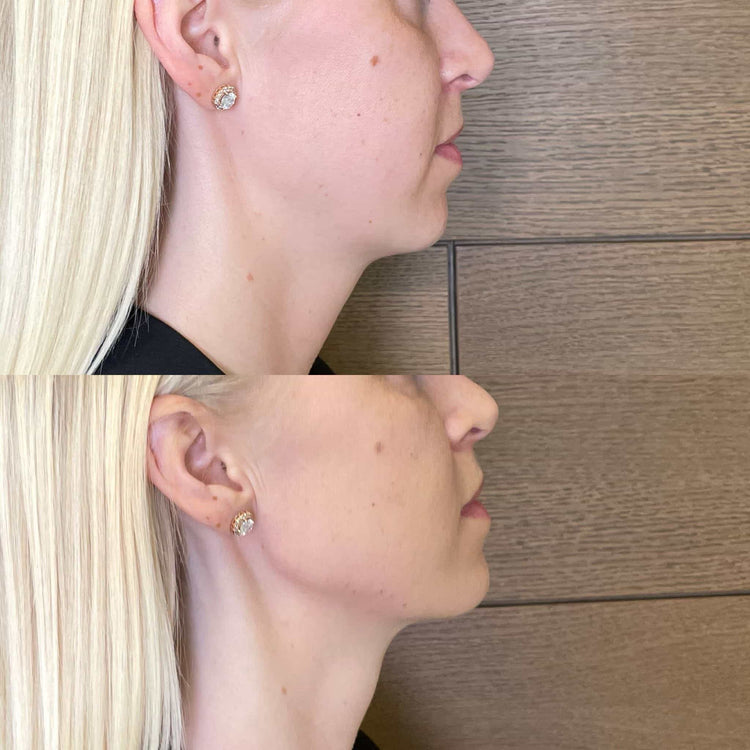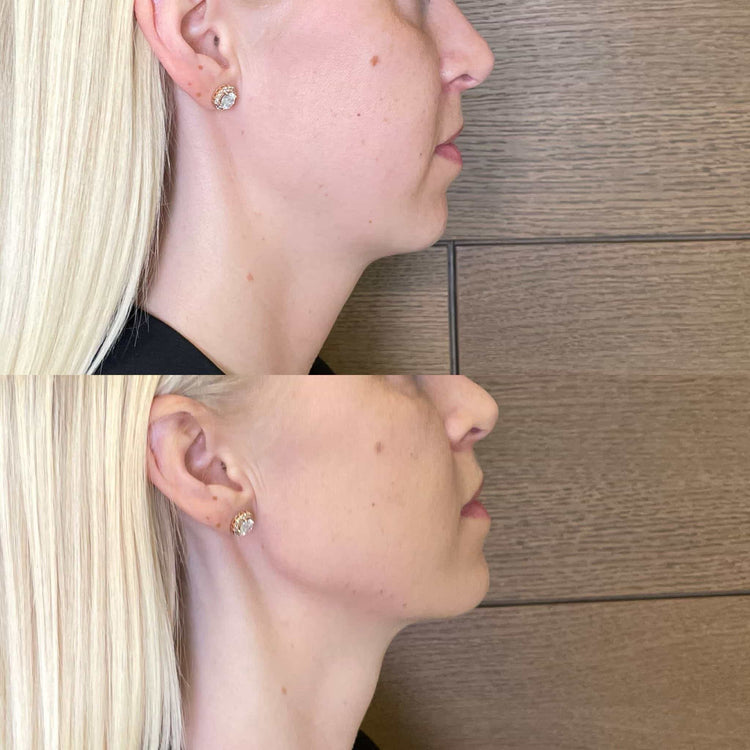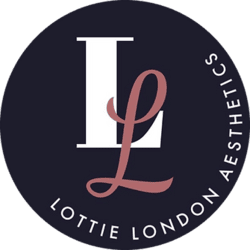Causes of a Double Chin
A double chin, medically known as submental fullness, occurs when there’s an excess of fat or loose skin under the chin. This can be caused by genetics, aging, weight gain, hormonal changes, posture, and even certain medical conditions.
Genetics play a role in how much fat is naturally stored under the chin, meaning some individuals are simply predisposed to developing a double chin. As we age, our skin loses elasticity, contributing to sagging and making the double chin more prominent. Weight fluctuations can also cause changes in submental fullness.
Hormonal imbalances, particularly during pregnancy or menopause, can lead to fat accumulation under the chin. Poor posture, especially forward head carriage, can exacerbate the appearance of a double chin by stretching the skin.
Appearance and Perception
A double chin, medically known as submental fullness, can be a source of self-consciousness for many individuals in Kingston Upon Thames. Fortunately, modern cosmetic procedures offer solutions to address this concern.
One increasingly popular option is dermal fillers, specifically those designed to target the submental area.
- How Jaw Fillers Work: Dermal fillers, often made of hyaluronic acid, are injected into the targeted areas to add volume and contour the jawline.
- Benefits of Jaw Fillers for Double Chin: Fillers can effectively reduce the appearance of a double chin by lifting and smoothing the skin, creating a more defined jawline.
- Procedure and Recovery: The procedure is relatively quick and minimally invasive, typically requiring only local anesthesia. Recovery time is generally short, with minimal downtime.
How Jaw Fillers Work
Dermal fillers, often made of hyaluronic acid, are injected into the targeted areas to add volume and contour the jawline.

Hyaluronic acid is a naturally occurring substance in the body that helps maintain skin hydration and elasticity. When injected, it plumps up the area, effectively reducing the appearance of submental fullness.
This creates a smoother transition between the chin and neck, resulting in a more defined jawline and a reduction in the appearance of the double chin.
Benefits of Jaw Fillers
Jaw fillers can offer significant benefits for individuals in Kingston Upon Thames seeking to address the concern of a double chin.
By strategically injecting hyaluronic acid filler into the submental area, these treatments can effectively contour and lift the jawline, minimizing the appearance of excess fat or loose skin.
This non-surgical approach provides a relatively quick and painless solution with minimal downtime for recovery.
Procedure and Recovery
Jaw fillers have become a popular choice for individuals seeking to address a double chin in Kingston Upon Thames.
Consultation and Planning
The procedure typically involves injecting dermal filler, often hyaluronic acid, into the submental area using a fine needle. A topical anesthetic may be applied beforehand to minimize any discomfort.
Recovery time is generally minimal with jaw fillers. Most patients can return to their normal activities immediately following the procedure. There might be some mild swelling or bruising that resolves within a few days.
Consultation and planning are crucial steps before undergoing any cosmetic treatment. During a consultation with a qualified practitioner, you’ll discuss your desired outcome, medical history, and any concerns you may have. The practitioner will assess your individual anatomy and determine the appropriate type and amount of filler needed to achieve the desired results.
It’s essential to choose a reputable and experienced practitioner who is certified in administering dermal fillers. They will guide you through the process, answer your questions, and ensure your safety and satisfaction.
The Procedure Itself
The procedure itself is relatively quick and minimally invasive, typically requiring only local anesthesia.
- A topical anesthetic may be applied beforehand to minimize any discomfort.
- Dermal filler, often hyaluronic acid, is injected into the submental area using a fine needle.
Downtime and Healing Process
The procedure for jaw fillers typically involves injecting dermal filler, often hyaluronic acid, into the submental area using a fine needle. A topical anesthetic may be applied beforehand to minimize any discomfort.
Recovery time is generally minimal with jaw fillers. Most patients can return to their normal activities immediately following the procedure. There might be some mild swelling or bruising that resolves within a few days.
Duration of Results
The procedure for jaw fillers typically involves injecting dermal filler, often hyaluronic acid, into the submental area using a fine needle. A topical anesthetic may be applied beforehand to minimize any discomfort.
Recovery time is generally minimal with jaw fillers. Most patients can return to their normal activities immediately following the procedure. There might be some mild swelling or bruising that resolves within a few days.
The duration of results from jaw fillers varies depending on individual factors such as metabolism, lifestyle, and the type of filler used. On average, the effects of hyaluronic acid fillers typically last between 6 to 18 months.

Maintaining Results
Maintaining the results of jaw fillers involves a combination of factors. It’s important to follow your practitioner’s post-treatment instructions carefully, which may include avoiding strenuous activity and applying cold compresses to minimize swelling. Protecting your skin from sun exposure with sunscreen is also crucial, as UV rays can break down hyaluronic acid.
Maintaining a healthy lifestyle, including a balanced diet and regular exercise, can help support the longevity of results by promoting overall skin health and elasticity.
Depending on the individual and the filler used, touch-up appointments may be recommended to replenish the hyaluronic acid and maintain the desired aesthetic. Regular consultations with your practitioner will allow them to assess the filler’s effectiveness and determine if touch-ups are necessary.
Qualifications and Experience
Jaw fillers can effectively reduce the appearance of a double chin by lifting and smoothing the skin, creating a more defined jawline.
The procedure is relatively quick and minimally invasive, typically requiring only local anesthesia. Recovery time is generally short, with minimal downtime.
To ensure safety and optimal results, it’s crucial to choose a qualified practitioner who is experienced in administering dermal fillers.
During a consultation, the practitioner will assess your individual anatomy and determine the appropriate type and amount of filler needed to achieve your desired outcome.
The qualifications and experience of the practitioner are essential for successful jaw filler treatment.
Look for practitioners who are certified by recognized medical boards and have a proven track record in performing dermal filler procedures.
Ask about their training, experience with submental filler injections, and any post-treatment care instructions they provide.
Location and Facilities
The procedure for jaw fillers typically involves injecting dermal filler, often hyaluronic acid, into the submental area using a fine needle. A topical anesthetic may be applied beforehand to minimize any discomfort.
Recovery time is generally minimal with jaw fillers. Most patients can return to their normal activities immediately following the procedure. There might be some mild swelling or bruising that resolves within a few days.
The duration of results from jaw fillers varies depending on individual factors such as metabolism, lifestyle, and the type of filler used. On average, the effects of hyaluronic acid fillers typically last between 6 to 18 months.
Maintaining the results of jaw fillers involves a combination of factors. It’s important to follow your practitioner’s post-treatment instructions carefully, which may include avoiding strenuous activity and applying cold compresses to minimize swelling. Protecting your skin from sun exposure with sunscreen is also crucial, as UV rays can break down hyaluronic acid.
Maintaining a healthy lifestyle, including a balanced diet and regular exercise, can help support the longevity of results by promoting overall skin health and elasticity.
Depending on the individual and the filler used, touch-up appointments may be recommended to replenish the hyaluronic acid and maintain the desired aesthetic. Regular consultations with your practitioner will allow them to assess the filler’s effectiveness and determine if touch-ups are necessary.
Jaw fillers can effectively reduce the appearance of a double chin by lifting and smoothing the skin, creating a more defined jawline.

The procedure is relatively quick and minimally invasive, typically requiring only local anesthesia. Recovery time is generally short, with minimal downtime.
To ensure safety and optimal results, it’s crucial to choose a qualified practitioner who is experienced in administering dermal fillers.
During a consultation, the practitioner will assess your individual anatomy and determine the appropriate type and amount of filler needed to achieve your desired outcome.
The qualifications and experience of the practitioner are essential for successful jaw filler treatment.
Look for practitioners who are certified by recognized medical boards and have a proven track record in performing dermal filler procedures.
Ask about their training, experience with submental filler injections, and any post-treatment care instructions they provide.
Risks and Side Effects
Like any medical procedure, jaw fillers carry potential risks and side effects. These are usually mild and temporary, but it’s important to be aware of them before undergoing treatment. Common side effects include swelling, bruising, redness, tenderness, and temporary changes in skin sensation at the injection site. In rare cases, more serious complications such as infection, allergic reactions, or uneven results may occur. It is crucial to consult with a qualified and experienced practitioner to discuss your medical history, potential risks, and expectations before making a decision about jaw filler treatment.
Common Side Effects
Like any medical procedure, jaw fillers carry potential risks and side effects. These are usually mild and temporary, but it’s important to be aware of them before undergoing treatment. Common side effects include swelling, bruising, redness, tenderness, and temporary changes in skin sensation at the injection site.
In rare cases, more serious complications such as infection, allergic reactions, or uneven results may occur. It is crucial to consult with a qualified and experienced practitioner to discuss your medical history, potential risks, and expectations before making a decision about jaw filler treatment.
Potential Complications
Like any medical procedure, jaw fillers carry potential risks and side effects. These are usually mild and temporary, but it’s important to be aware of them before undergoing treatment. Common side effects include swelling, bruising, redness, tenderness, and temporary changes in skin sensation at the injection site.
In rare cases, more serious complications such as infection, allergic reactions, or uneven results may occur. It is crucial to consult with a qualified and experienced practitioner to discuss your medical history, potential risks, and expectations before making a decision about jaw filler treatment.
- Jaw Fillers For A Defined Jawline Near Ottershaw, Surrey - September 29, 2025
- Jaw Fillers For A Defined Jawline Near Blackheath, Surrey - September 28, 2025
- Gummy Smile Treatment – Gum Contouring Near Limpsfield, Surrey - September 27, 2025
